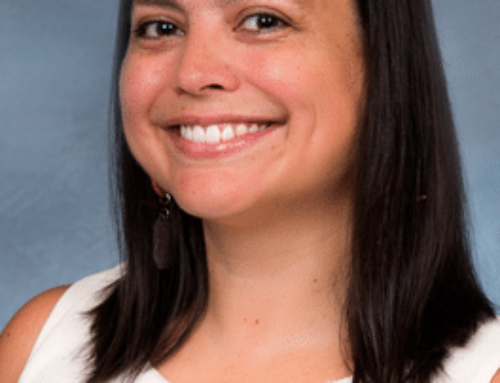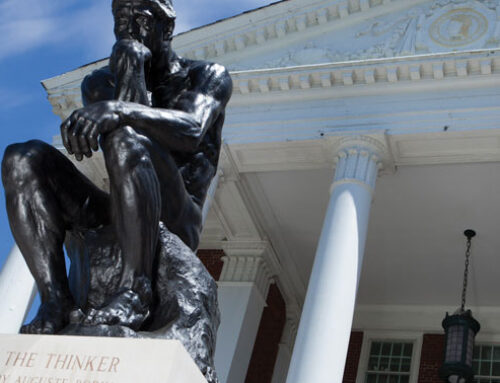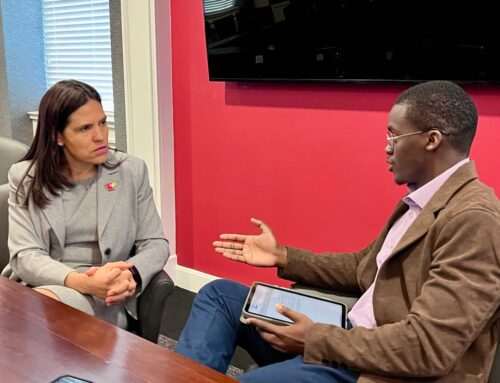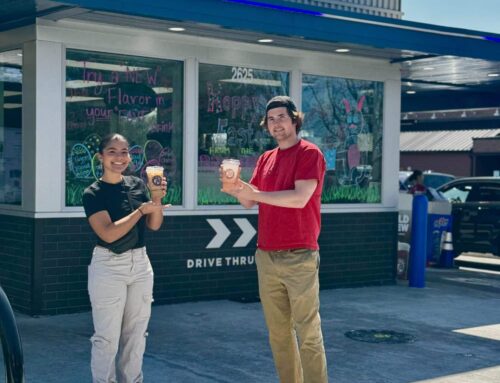By Val Servino–
Senior Molly Eames is the delightfully exuberant Resident Assistant in the Rustin Community, on University Tower Apartments’ eighth floor. “They’re in top five best things that happened to me, along with bacon,” she jokes about her residents. Her motives for working and living in the community, however, are much more serious. “I really like mentoring, and creating those relationships where the students can come to me and talk about their issues and I know that I can be a resource…I love community building. I love trying to create safe spaces, not just physically or emotionally but spiritually. They can just let it all hang out when they’re home.”
The social justice community opened to students this fall, based around the principles of non-violence that guided Bayard Rustin, the civil rights leader after which it was named, and his predecessors. It is the only community of its kind in the state, as well as the entire Southern United States. The community opened on the centennial celebration of the life of Bayard Rustin, whose most remarkable though coincidentally also overlooked achievement is the organization of the 1963 March on Washington for Jobs and Freedom.
The residents are offered community service opportunities in the Lesbian, Gay, Bisexual, and Transgender (LGBT) community, as well as their various service-related interest areas, such as environmental issues or immigrant rights with the Development, Relief, and Education for Alien Minors, or DREAM Act, freshman resident Alex Cooper discussed. Community members are required to perform ten service hours per semester, in addition to monthly programs based around social justice issues. No students are currently Peace Studies or Social Change minors, but Eames said she “wouldn’t be surprised” if they were by graduation.
When asked about their reasons for living on the floor, many residents highlighted the sense of community the felt, whether they were LGBT-identified or not. Those who did fall under the umbrella of a non-heterosexual, or binary identity acknowledged the discomfort and uncertainty of traditional dorm living, be it through unfamiliar roommates, community bathrooms, or the lack of relatability of it all. Kaiden Volpe, a freshman Psychology major noted, “I wanted a safe space to live. I didn’t want to have to worry about the way I looked or dressed, or anything, really. I can present the way I want to, without being judged for it, and that’s a big deal.”
Rustin Community advisor and LGBT Center Assistant Director Lisa Gunterman recognized University leadership for their role in the creation of the social justice community, particularly the Vice Provost of Diversity Mordean Taylor-Archer. She added, “When you create a safe space for students, they thrive. Students are more likely to graduate, and get the support that they need and become connected and not, you know, be here for a semester and then leave.”
Alex Cooper was in the closet before the Mold Crisis of 2012 “excommunicated” her to the Province. She soon found herself at University Tower Apartments, where most of her friends were living. Her discomfort in Miller Hall however was not restricted to her repressed sexual orientation. “I was the only person of color on the floor. I’m still a minority here, but at the same time, people value me, they value my opinion for things that we talk about, just regularly in normal conversation, as a person of color – and that was never brought up (at Miller). I felt that it was something people were ignoring, or people just choose to look over it. I feel more like myself here. More like I can identify with that part of myself.”
[email protected]
Photos by Val Servino/The Louisville Cardinal





